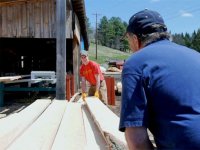When Schools Welcome Community Partners
Your content has been saved!
Go to My Saved Content.According to some of the nation's top teachers, the greatest barriers to school success have little to do with what happens in the classroom. A recent survey of the 2015 state Teachers of the Year shows that they consider family stress, poverty, and psychological problems to be some of the greatest challenges that students must navigate if they are to succeed academically. Yet when it comes to education policy and reform, these issues are frequently ignored.
However, some communities are seeing success in addressing these and similar issues through the community schools model. According to the Coalition for Community Schools, a community school is "both a place and a set of partnerships between the school and other community resources."
Its integrated focus on academics, health and social services, youth and community development, and community engagement leads to improved student learning, stronger families, and healthier communities. Using public schools as hubs, community schools bring together many partners to offer a range of supports and opportunities to children, youth, families, and communities.
Cincinnati's Community Learning Centers
One community that has truly embraced this model is Cincinnati. There, such schools are known as Community Learning Centers (CLCs). They use school space during extended hours, on weekends, and through the summer to provide academic support, health resources, social services, arts programming, civic, and cultural opportunities for students, their families, and the community.
What exactly that means depends on the community served. Here are three great examples:
Example #1: Pleasant Ridge Montessori
One of the only local public Montessori schools in the nation, located in a middle class neighborhood, they work with community partners to offer extracurricular and leadership activities for students (such as Boy and Girl Scouts, hip hop, and Spanish), community-building activities (including open gym night and a community garden that also serves the school for instructional purposes), academic enrichment, and student athletics.
Example #2: Oyler Community Learning Center
Located in one of the city's most disadvantaged communities, the center ensures that students have access to needed services through its on-site health center, a vision center, a dental clinic, and several social workers provided by community partners to help address mental health needs.
Also located on-site: an early-learning center providing care to children age six weeks to five years; an elementary mentoring program supported by over 400 mentors; and a clothing closet that provides donated shirts, shoes and more to those who need them. Of course, the school offers many partnerships aimed at academics and extra-curricular activities as well, with their ultimate vision of preparing all students for college and career.
Example #3: Roberts Academy
With 52 percent of students English learners, the academy is home to an international welcome center, which provides assistance, resources, and support (including adult ESL classes, social service referrals, financial literacy, individual housing, employment assistance, and translators) to international families in the greater Cincinnati community. The school also houses a number of partners, including a school-based health clinic, and offers additional educational, after-school, and health support from other providers.
Accommodating Various Community Partners at a School
When considering similar partnerships in your own school or district, you might wonder how to accommodate them in the school building. You want the support, but you need to find partners space to work, and you need to maintain student safety.
Cincinnati benefited from a district vision on community schools. As I learned on a recent study tour hosted by the Coalition for Community Schools and the Educational Facilities Clearinghouse at the George Washington University, when the district set out to rebuild its school facilities more than a decade ago, it intentionally redesigned them to serve both students and the community.
What to Consider in Community Partnerships
Not all schools benefit from that kind of forward thinking. But Cincinnati offers a few key lessons that any school can consider in thinking about how it accommodates community partners:
Consider the flow of the building.
If you need dedicated space for a community partner, don't just use a currently available office or classroom. Put your partners where it makes sense in terms of access and usability, which will vary depending on their purpose. (Are they working with students or community members? Do they need privacy? Will they be making noise?) That may involve relocating classrooms or other spaces, but it will be worth it.
Keep headquarters for family and community services in a front, concentrated area.
This accomplishes several things. It prevents students from seeing their parents and neighbors as they receive services. It makes it easier to monitor who has access to and is in the space, making it easier to keep students safe. And it prevents disruption to the school as partners and those seeking services don't have to walk down classroom halls where students are learning. When possible, have a separate entrance with a sign-in station for community members close to this area to avoid backlog in the school office (and, in the case of tutors and mentors, to maximize time working with students).
Think outside the box in finding space.
Even though Cincinnati's schools were designed as community hubs, over time schools have formed new partnerships and gotten creative in finding space. For example, Oyler's three-seat dental clinic is a converted storage closet that uses portable equipment to avoid the need for plumbing.
And one final lesson: Truly welcome partners and community members to the school. A warm greeting, sincere words of thanks, and a cup of coffee will go a long way in ensuring that your community comes back to both support and be supported by the school.
